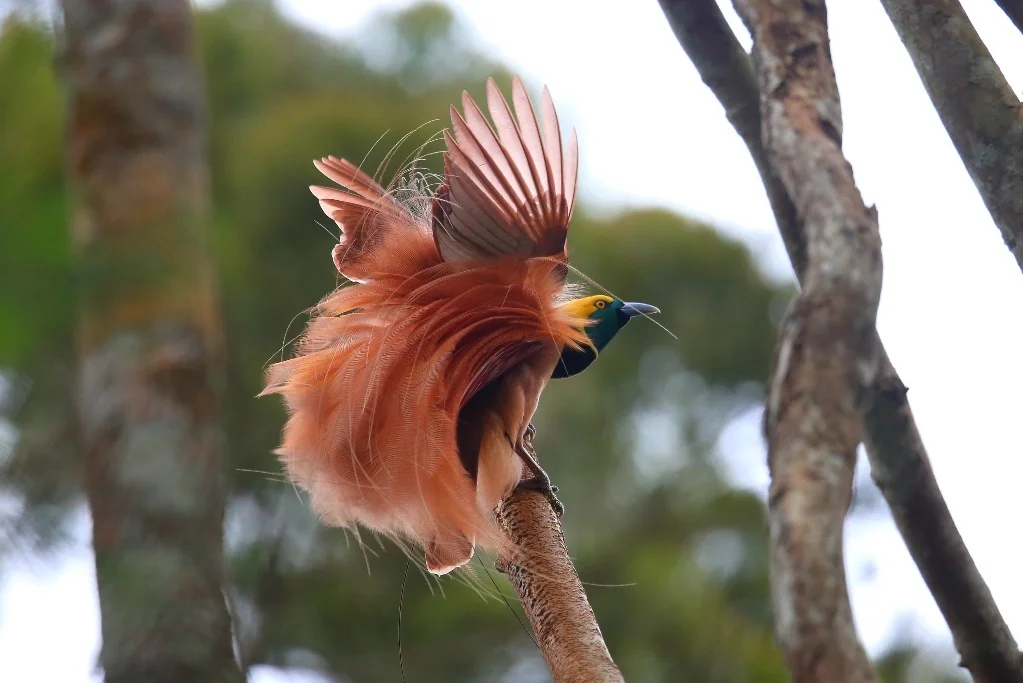
Sir David Attenborough and Birds of Paradises
I believe that the birds of paradise are the most romantic and glamorous birds in the world. Sir David Attenborough, the world’s most famous and influential naturalist, made a similar statement while filming the acclaimed documentary ‘Birds-of-Paradise.’ The film was first released more than 25 years ago, and a newer version featuring Attenborough’s voice was re-released in 2015. Attenborough’s voice is one of the world’s most adored and recognisable broadcasting voices.
My fascination with birds of paradise began when I read an article about Attenborough’s first film on the subject. I remember seeing an article about birds of paradise in a local newspaper in 1995. Still, unfortunately, I lost the newspaper clipping after seeing more than half of the world’s surviving birds of paradise species.
In 2015, I made my first trip to Papua New Guinea. Initially, I had planned to travel alone, but my Facebook friend Geoffrey Jones advised against it, citing the high cost of solo travel in PNG and related security concerns. After researching the topic online, I abandoned the idea of travelling solo. Fortunately, months later, Geoffrey agreed to join me on a bird photography tour to PNG and even arranged for another veteran birder from Australia, Tony Palliser, to come along.
My Variratta Expedition to see the Reggiana Bird Of Paradise
We met at the Holiday Inn in Port Moresby on a Monday evening. We instantly became good friends; that is always the norm when two more birders meet. Of course, it would happen faster if it were on a couple of bottles of beer, as in our case.
The following day, around 5.30 a.m., we started for the Varirata National Park, led by Daniel Wakra, a well-known and highly experienced birding guide in Papua New Guinea. The park is around 30 kilometres from the city and on high terrain. As a result, the park is more pleasant than the city.
We arrived at the park around 6.30 p.m., and it was deserted and quiet. Daniel had been explaining the various habitats in the park and the varieties of birds that live there while carefully driving his car across the deserted road leading from the city to the park. We went deeper into the park, probably about two kilometres in, when he pulled over to the side of the road and parked. He escorted us to a tree on the upper side of the road and instructed us to set up our tripods at specific locations after consulting the focal length of our long lenses.
We heard a loud call. Immediately, a response call sounded from a tree near the tree with the display lek*. “They’re here,” Daniel whispered into my ear.
The light was poor but enough to focus on the display lek for my Canon 1dx. However, it was impossible to locate the calling birds among the dense foliage from where the calls appeared to be coming.
Then, all of a sudden, a gorgeous male bird landed on the lek*.
It was the first time I had seen a bird of paradise with my own eyes.
The calls became louder and more hostile when three more male birds joined him on the lek. They intensely flapped their wings and leapt from branch to branch, tossing their long tail feathers beautifully over their upper bodies and calling loudly. Finally, after some wing-fluttering, the male Raggiana bird in pole position (the alpha male that eventually won the prize) began his big performance by raising his wings and clapping them loudly. We didn’t notice the female until Daniel pointed to a nondescript bird on a branch of the same tree protruding slightly above the lek. The more self-assured alpha male then stood upright, displaying a magnificent posture. He closed his wings, thrust them down, and hopped sideways, throwing back his head and shouting.
The female bird jumped down to the lek to look closer at the alpha male. He approached her with mesmerising footwork and delivered his best performance to please her. She showed her acceptance and obedience, and they quickly bonded.
The show for the day was over.

